
Your new horse swishes his tail, pins his ears, and swings his butt to the side every time you pick up the left lead. When you bought him, his previous owner told you, “Oh don’t worry about it, he’s always done that. It’s just normal for him,” but now you’re not so sure. Is it really normal?
Great question! In fact, it’s just this type of scenario that caused researchers to start asking what behaviors horses exhibit under saddle that might mean there’s something wrong. After all, would you really want to force your horse to perform a straight transition if he’s simply saying that he hurts? Most horse owners would say no. And you might be surprised to learn that studies indicate as many as 50% or more of horses that owners think are sound are actually lame.
How can that be? Lameness that is “subclinical” or mild enough that it’s difficult to recognize may go undiagnosed, but still be a source of pain. And bilateral (impacts both front of both hind legs) or multi-limb lameness can easily go unnoticed. Forcing a horse to perform when he’s hurting is an important welfare issue. We owe it to our horses to make sure they’re comfortable in their work.
In an effort to protect our equine athletes, and perhaps put a stop to coercive or harsh training methods that can sometimes be employed to overcome “bad behavior” that might actually be due to pain, researchers in the U.K. have developed a tool called the Ridden Horse Pain Ethogram (RHpE).
In this article, I’m going to introduce the basics of the RHpE. I’ll tell you what it is, how it was developed, and how it can help you evaluate your own horse’s behavior.
この記事は Horse and Rider の Spring 2023 版に掲載されています。
7 日間の Magzter GOLD 無料トライアルを開始して、何千もの厳選されたプレミアム ストーリー、9,000 以上の雑誌や新聞にアクセスしてください。
すでに購読者です ? サインイン
この記事は Horse and Rider の Spring 2023 版に掲載されています。
7 日間の Magzter GOLD 無料トライアルを開始して、何千もの厳選されたプレミアム ストーリー、9,000 以上の雑誌や新聞にアクセスしてください。
すでに購読者です? サインイン
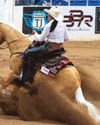
The Horse
LIFE TAKES US DOWN different paths, but I seem to be on just one, which is with the horse.
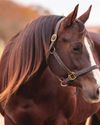
Decoding the Diseases Examined by AQHA's Six-Panel Test
The six-panel test is a diagnostic tool used to assess the genetic predispositions of horses. It's meant to discover if a horse has or is a carrier for certain hereditary diseases and traits.
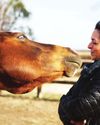
Love is Good
All horses are assured a hopeful, compassionate plan of care at This Old Horse, a program that helps not only horses but people, too.

HORSE PACKING 101
Take your trail riding to the next level with nature-filled adventures in the back or front country.

NEW HORSE; NEW PROBLEMS
Anew horse can bring excitement and energy to the barn, and even reinvigorate your passion. However, there are also a myriad of new problems that can come with a new horse, so learn how to introduce him properly to avoid these common issues.
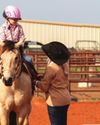
First-Timer Tips
Heading to a young rider's first event with their horse can be intimidating. Use these myths and truths to make it smoother sailing for yourself and your young rider.
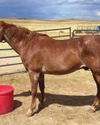
Re-Rescued: Aslan's Story
One special gelding learns about three different types of love during his rescue journey.

The Country's Hottest Horse Motels
Take your next trail-riding adventure to the next level by staying at one of these six horse motels across the United States.
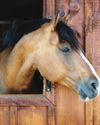
Outbreak! What We've Learned
Learn how disease outbreaks in recent years have changed the horse industry, and why it's so important to play your part when it comes to disease prevention efforts.

TRAINING THE SENSITIVE HORSE
Shift your mindset and grow your sensitive horse's pressure-handling skills to improve his confidence and your riding enjoyment.